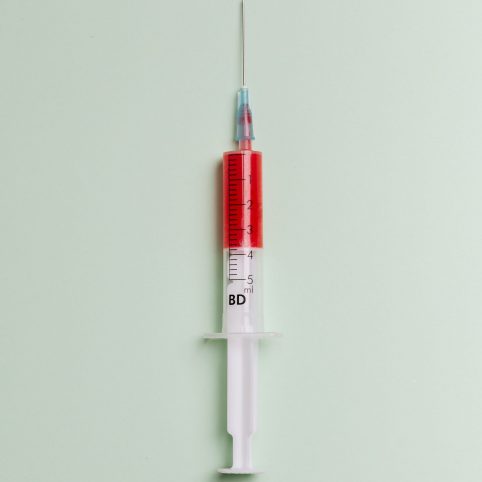Subcutaneous (under the skin) Care
Some therapies are injected under the skin (a subcutaneous injection), so you do not need to access a vein. Use only recommended places for injection. The recommended places to give an injection are:
- The front of the waist (lower abdomen),at least 5cm away from the navel.
- The upper outer arms (only suitable if given by caregiver), or
- The front of the thighs.
- For each injection, use a different area of the body to the one you used last time.
- Do not give injections where the skin is red, bruised, tender, hard, or areas where there are moles or scars.
- When using Hemlibra®, any other medicine injected under the skin should be given in a different area.
- Injection site irritation or redness can occur.
Vein Care
Having good veins for intravenous medication is not just good luck. Maintaining good veins is very important. You have two kinds of blood vessels – arteries and veins. Arteries carry blood from the heart and lungs to all parts of the body. They lie deep in the body, near a bone usually. Veins carry blood back to the heart and lungs from the body tissues. They have thinner walls, lie closer to the surface and do not pulsate. The veins closest to the skin’s surface are used to get blood during a blood test, or to put medication into the body.
Medicines given through veins often irritate the walls of the veins. Switching veins each time you need to infuse, helps to decrease irritation and scarring. You can make veins bigger in your arms by doing some simple exercises. Have someone place a tourniquet around your upper arm. It should be tight enough so that your veins stand out in a few minutes, but not so tight that you can’t feel a pulse at the inside elbow. Squeeze your fingers in and out until your arm gets tired. Rest a little, then repeat this exercise again. If you do this frequently, it will improve your veins.
You might ask, how does this improve your veins? Any blood flowing into the arms through arteries must flow out of the arms through the veins. When you do this exercise, your muscles tighten, clamping off veins that run through them. This makes all the blood that flows into the arms return through surface veins. This causes veins to become larger and stronger, making them easier to find and use.
Remember, it’s like any other exercise. It only works if you do it regularly. And it will certainly help with your infusions. Home treatment and prophylaxis have become a way of life for people with haemophilia, therefore it is very important to look after your veins. While self-infusing may be challenging for some, you are the best person to administer factor replacement therapy.
- Stay hydrated – make sure you drink plenty of fluids before you are due to have your infusion.
- Stay warm – if you are cold, your veins will constrict and will be much more difficult to find and access. You could wrap your arm in a hot towel for about ten minutes. This will also help veins enlarge and become more visible.
- Rotate sites if possible to give your veins a chance to recover, keep track of which vein is used and when.
- Never put pressure on the site before, during or when withdrawing the needle.
- Make sure you apply a sterile dressing to the site for a minimum of one hour after infusing.
- If a health care professional needs to access your veins for blood sampling or to administer treatment, you should inform them what veins are good, after all, you know your body better than anyone.
- Relax and make sure you are comfortable.
- Dangling your arm over the edge of the bed/chair for ten minutes before you access your veins will allow gravity to increase blood flow to the limb.
- Squeeze a rubber ball, or flap your arms up and down to increase blood flow.
- Ask the staff at your haemophilia treatment centre to recommend some arm exercises.
Remember, practice makes perfect!
Please click on this link to read the I.H.S. publication on Veincare.
